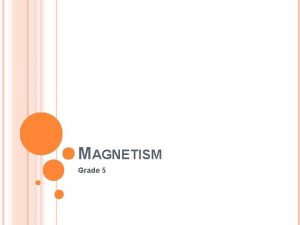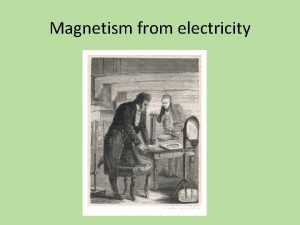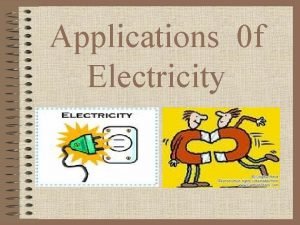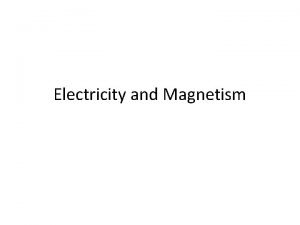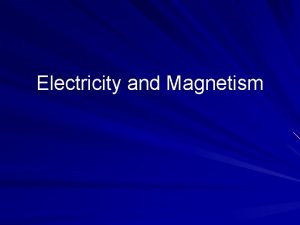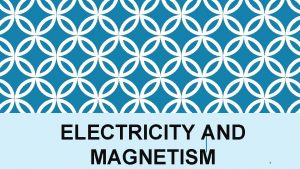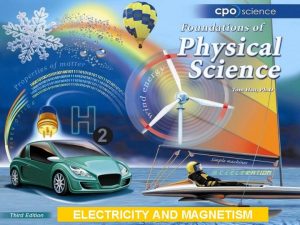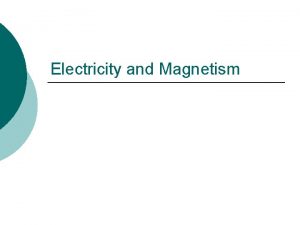Electricity and Magnetism Magnetic Fields Mr D Patterson










- Slides: 10

Electricity and Magnetism: Magnetic Fields Mr D. Patterson

Outcomes • explain the attraction and repulsion effects for magnets, the behaviour of freely suspended magnets and magnetic compasses, and describe the nature of the Earth's magnetic field • describe, using diagrams, the magnetic field in various magnetic configurations

This train levitates above the track using magnets

Properties of Magnetism • Non contact force • North and south poles (dipoles) • Like poles repel while unlike poles attract

Magnetic Fields • A magnetic field shows the direction the north pole of a small bar magnet will point. • Draw field lines away from north poles and toward south poles. • Never cross the lines.

The Earth is a Bar Magnet • A magnet, in the absence of any other forces will align itself with the magnetic field lines. • This is the basis for the compass.


Magnetic flux Density • Magnetic flux density (B) is a vector quantity measuring the strength and direction of a magnetic field Larger magnetic flux density Smaller magnetic flux density • It is indicated visually by the closeness of the field lines and measured using units of Teslas (T)

Ferromagnetic materials • Magnetic effects are created because of: – The motion of charged particles like electrons – A property of electrons called “spin”. Electrons can either be in a state of spin up or spin down.

Ferromagnetic materials • Ferromagnetic materials such as iron, nickel, cobalt and some rare earth metals will become permanent magnets when all their magnetic domains line up







